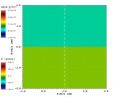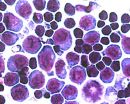(Press-News.org) Researchers from the Spanish National Research Council (CSIC) have developed a software based on the discovery of some algorithms that enable the identification of each individual, therefore allowing their tracking within the group. Thus, the door opens to the quantitative study of the rules of social interaction for many species. The work has been published in the Nature Methods journal.
Animals that move in groups make decisions considering what other members of their community do. To find out the rules of these interactions, researchers record monitoring videos through which they study the behavior of different individuals. However, existing monitoring methods so far show identification errors throughout the video, which makes that assignment of identity is wrong.
Researchers from the Cajal Institute (CSIC) have developed a software called idTracker, a CSIC patent that enables tracking of animals through identification. The image of the individual, with its unique features, becomes the particular "footprint" of each animal, which allows tracking it although the human visual system can not. Even if they hide or temporarily disappear from the scene, these are recognized by the program when they enter the scene again.
Gonzalo G. de Polavieja, CSIC researcher and head of the study, states: "From now on, we will be able to quantitatively determine the rules of animal behavior in groups taking into account the individuality of each animal".
Frame by frame tracking
The software identification system first performs a search of the specimens when they are separated and can be differentiated. Since then, the program identifies and recognizes its image in every frame of the video. The identification is automatically done by extracting the 'footprint' of each animal. Thus, the routes that each of them took can be determined. De Polavieja adds: "Furthermore, it is possible to study the same individual in several videos because its 'footprint' is always the same. This enables a better understanding of their behavior".
Researchers claim that idTracker is a very easy to use software that can be used with a variety of different species. They state: "We have done tests with fish (Danio rerio and Oryzias latipes), flies (Drosophila melanogaster), ants (Messor structor) and mice (Mus musculus), but it can be applied to other animals".
And among the applications of this software, Alfonso Pérez Escudero, CSIC researcher also during the preparation of this study, notes that "in the short term, this will be used in science, but in the longer term, the method we have developed can be applied to recognize people in large crowds, vehicles or parts in a factory, for instance".
INFORMATION:
Alfonso Pérez-Escudero, Julián Vicente-Page, Robert C. Hinz, Sara Arganda y Gonzalo G. de Polavieja. idTracker: Tracking individuals in a group by automatic identification of unmarked animals. Nature Methods. DOI: 10.1038/nmeth.2994
CSIC develops a software able to identify and track an specific individual within a group
The program, idTracker, detects and follows every animal in the videos and allows to know the behavior rules of their social interaction
2014-06-01
ELSE PRESS RELEASES FROM THIS DATE:
Graphene's multi-colored butterflies
2014-06-01
Writing in Nature Physics, a large international team led by Dr Artem Mishchenko and Sir Andre Geim from The University of Manchester shows that the electronic properties of graphene change dramatically if graphene is placed on top of boron nitride, also known as 'white graphite'.
One of the major challenges for using graphene in electronics applications is the absence of a band gap, which basically means that graphene's electrical conductivity cannot be switched off completely. Whatever researchers tried to do with the material so far, it remained highly electrically ...
Paired enzyme action in yeast reveals backup system for DNA repair
2014-06-01
The combined action of two enzymes, Srs2 and Exo1, prevents and repairs common genetic mutations in growing yeast cells, according to a new study led by scientists at NYU Langone Medical Center.
Because such mechanisms are generally conserved throughout evolution, at least in part, researchers say the findings suggest that a similar DNA repair kit may exist in humans and could serve as a target for controlling some cancers and treating a rare, enzyme-linked genetic disorder called Aicardi-Goutieres syndrome. The syndrome, an often fatal neurological condition, is found ...
Pitt team first to detect exciton in metal
2014-06-01
PITTSBURGH—University of Pittsburgh researchers have become the first to detect a fundamental particle of light-matter interaction in metals, the exciton. The team will publish its work online June 1 in Nature Physics.
Mankind has used reflection of light from a metal mirror on a daily basis for millennia, but the quantum mechanical magic behind this familiar phenomenon is only now being uncovered.
Physicists describe physical phenomena in terms of interactions between fields and particles, says lead author Hrvoje Petek, Pitt's Richard King Mellon Professor in the Department ...
Subtle change in DNA, protein levels determines blond or brunette tresses, study finds
2014-06-01
STANFORD, Calif. — A molecule critical to stem cell function plays a major role in determining human hair color, according to a study from the Stanford University School of Medicine.
The study describes for the first time the molecular basis for one of our most noticeable traits. It also outlines how tiny DNA changes can reverberate through our genome in ways that may affect evolution, migration and even human history.
"We've been trying to track down the genetic and molecular basis of naturally occurring traits — such as hair and skin pigmentation — in fish and humans ...
International collaboration replicates amplification of cosmic magnetic fields
2014-06-01
VIDEO:
This video simulation shows how a laser that illuminates a small carbon rod launches a complex flow, consisting of supersonic shocks and turbulent flow. When the grid is present, turbulence...
Click here for more information.
Astrophysicists have established that cosmic turbulence could have amplified magnetic fields to the strengths observed in interstellar space.
"Magnetic fields are ubiquitous in the universe," said Don Lamb, the Robert A. Millikan Distinguished ...
Researchers discover hormone that controls supply of iron in red blood cell production
2014-06-01
A UCLA research team has discovered a new hormone called erythroferrone, which regulates the iron supply needed for red blood-cell production.
Iron is an essential functional component of hemoglobin, the molecule that transports oxygen throughout the body. Using a mouse model, researchers found that erythroferrone is made by red blood-cell progenitors in the bone marrow in order to match iron supply with the demands of red blood-cell production. Erythroferrone is greatly increased when red blood-cell production is stimulated, such as after bleeding or in response to anemia.
The ...
Leptin also influences brain cells that control appetite, Yale researchers find
2014-06-01
Twenty years after the hormone leptin was found to regulate metabolism, appetite, and weight through brain cells called neurons, Yale School of Medicine researchers have found that the hormone also acts on other types of cells to control appetite.
Published in the June 1 issue of Nature Neuroscience, the findings could lead to development of treatments for metabolic disorders such as obesity and diabetes.
"Up until now, the scientific community thought that leptin acts exclusively in neurons to modulate behavior and body weight," said senior author Tamas Horvath, the ...
Mayo Clinic: Ovarian cancer subtypes may predict response to bevacizumab
2014-06-01
CHICAGO — Molecular sequencing could identify ovarian cancer patients who are most likely to benefit from treatment with bevacizumab (Avastin), a Mayo Clinic-led study has found. Results of the research were presented today at the 2014 American Society of Clinical Oncology Annual Meeting.
The addition of bevacizumab to standard therapy extended progression-free survival more for ovarian cancer patients with molecular subtypes labeled as "proliferative" or "mesenchymal" compared to those with subtypes labeled as "immunoreactive" or "differentiated," says Sean Dowdy, M.D., ...
Oncologists: How to talk with your pathologist about cancer molecular testing
2014-06-01
As targeted therapies become more available, increasing opportunity exists to match treatments to the genetics of a specific cancer. But in order to make this match, oncologists have to know these genetics. This requires molecular testing of patient samples. An education session presented today at the American Society for Clinical Oncology (ASCO) Annual Meeting 2014 details the challenges in this process and makes recommendations that oncologists can use to ensure their patients' samples are properly tested, helping to pair patients with the best possible treatments.
"The ...
Chemotherapy following radiation treatment improves progression-free survival
2014-06-01
CHICAGO — A chemotherapy regimen consisting of procarbazine, CCNU, and vincristine (PCV) administered following radiation therapy improved progression-free survival and overall survival in adults with low-grade gliomas, a form of brain cancer, when compared to radiation therapy alone. The findings were part of the results of a Phase III clinical trial presented today at the 2014 American Society of Clinical Oncology Annual Meeting by the study's primary author Jan Buckner, M.D., deputy director, Cancer Practice, at Mayo Clinic Cancer Center.
"On average, patients who ...
LAST 30 PRESS RELEASES:
What causes some people’s gut microbes to produce high alcohol levels?
Global study reveals widespread burning of plastic for heating and cooking
MIT study shows pills that communicate from the stomach could improve medication adherence
Searching for the centromere: diversity in pathways key for cell division
Behind nature’s blueprints
Researchers search for why some people’s gut microbes produce high alcohol levels
Researchers find promising new way to boost the immune response to cancer
Coffee as a staining agent substitute in electron microscopy
Revealing the diversity of olfactory receptors in hagfish and its implications for early vertebrate evolution
Development of an ultrasonic sensor capable of cuffless, non-invasive blood pressure measurement
Longer treatment with medications for opioid use disorder is associated with greater probability of survival
Strategy over morality can help conservation campaigns reduce ivory demand, research shows
Rising temperatures reshape microbial carbon cycling during animal carcass decomposition in water
Achieving ultra-low-power explosive jumps via locust bio-hybrid muscle actuators
Plant-derived phenolic acids revive the power of tetracycline against drug-resistant bacteria
Cooperation: A costly affair in bacterial social behaviour?
Viruses in wastewater: Silent drivers of pollution removal and antibiotic resistance
Sub-iethal water disinfection may accelerate the spread of antibiotic resistance
Three in four new Australian moms struggle with body image
Post-stroke injection protects the brain in preclinical study
Cardiovascular risk score predicts multiple eye diseases
Health: estimated one in ten British adults used or interested in GLP-1 medications for weight loss
Exercise to treat depression yields similar results to therapy
Whooping cough vaccination for pregnant women strengthens babies’ immune system
Dramatic decline in new cases of orphanhood in Uganda driven by HIV treatment and prevention programs
Stopping weight loss drugs linked to weight regain and reversal of heart health markers
Higher intake of food preservatives linked to increased cancer risk
Mass General Brigham–developed cholera vaccine completes phase 1 trial
First experimental validation of a “150-year-old chemical common sense” direct visualization of the molecular structural changes in the ultrafast anthracene [4+4] photocycloaddition reaction
Lack of support for people on weight loss drugs leaves them vulnerable to nutritional deficiencies, say experts
[Press-News.org] CSIC develops a software able to identify and track an specific individual within a groupThe program, idTracker, detects and follows every animal in the videos and allows to know the behavior rules of their social interaction

